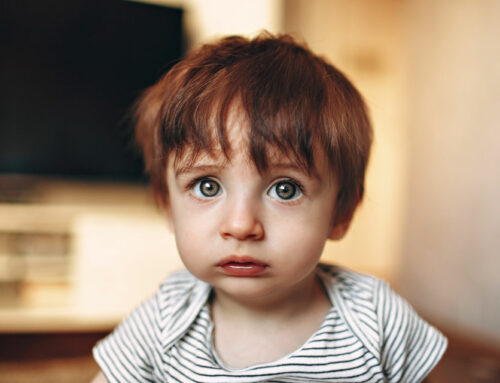It’s that time of year – what do you get a child with high learning potential for Christmas?
Selecting presents for any child has a certain amount of jeopardy, even with detailed Christmas presents lists an A3 page long, but for a child with high learning potential or dual or multiple exceptionality (high learning potential with a special educational need or disability) gifts often need to go that extra step to match their imagination and it can be disheartening when you find what you think is the perfect present only to discover that you aren’t on the same wavelength as your child at all! Therefore we turned to Potential Plus UK members to find out what they loved themselves when they were children, what has gone down well – or perhaps not so well – with their children and what are perhaps the most unusual or quirky presents they have bought them!
While it is usually a fairly safe bet to be led by a child’s choices – deepening an existing interest – we don’t always get it right. One parent sadly mentioned that they had thought they had found the perfect present with a space jumper that had lift-up flaps with cool facts about the planets, but the jumper got the thumbs down from their six year old because it didn’t contain the dwarf planets. So be aware that even presents recommended in this blog may not be the perfect match for your child!
Try to find gifts which are open-ended rather than prescriptive, suit your child’s intellectual curiosity and level of ability now, and can potentially grow with the child and be adapted to new purposes so that they are more likely to last. Puzzles, books, models, games, STEM and/or tech projects and creative art materials are just a few of the gifts that can offer this experience – one parent mentioned the Galt Rainbow Lab allowed their six year old to experiment with creating multiple shades of green by mixing different proportions of blue and yellow food colouring, while another said that the Leapfrog Magic Adventures Globe was still getting a lot of play after two years, because whilst it was used to find out about the countries and to link to BBC wildlife animal videos in the beginning, now it is fulfilling an interest in languages and currencies and giving value from the quiz setting.
As you might expect, books were a recurring theme for a child with high learning potential and being able to read books together with parents was very important. Books like A Street in Time or infographic type encyclopaedias like Britannica’s Encyclopedia Infographica were recommended as great launch pads to discussions. Infographic type books are also great for dipping in and out of for children who may struggle with ADHD or similar attention or reading difficulties.
STEM books tended to dominate books recommended by parents including:
- Stowell and Chisholm: Write Your Own Storybook – Fun Activity Book
- Anna Weltman: This is not a Maths Book: A Smart Art Activity Book
- Alex Bellos: Alex’s Adventures in Numberland
- Hans Magnus Enzensberger: The Number Devil
- Poskitt Kjartan Murderous Maths Series
- Brian Cox and Jeff Forshaw Black Holes
- Bobby Seagull The Life-Changing Magic of Numbers
- Books by Adam Kay including the new Kay’s Incredible Inventions: A fascinating and fantastically funny guide to inventions that changed the world (and some that definitely didn’t)
- Books by Dara O’Briain aimed at children – like Is There Anybody Out There?
- Books by Ian Stewart like Professor Stewart’s Cabinet of Mathematical Curiosities
But don’t forget that there are many more books recommended in our free advice sheets
- Reading List for Early Years Children with High Learning Potential
- Reading List for KS1 Children with High Learning Potential
- Reading List for KS2 Children with High Learning Potential
- In the Blog: 55 Books for 55 Years
- and Recommendations from children and young people themselves in our Summer Reading Challenge Series
Subscriptions to children’s newspapers such as The Week Junior or First News or magazines like Aquila; Okido; Whizz, Pop, Bang and National Geographic Kids were popular https://schoolreadinglist.co.uk/resources/magazines-and-newspapers-for-children-and-teenagers/ While Manga for children were considered both great stepping stones into chapter books and popular as an art/literature form in their own right (let’s face it Pokémon or Zelda are always going to be a win) https://www.slj.com/story/a-starter-manga-set-15-titles-for-children-and-tweens. One parent mentioned their four year old enjoying Calvin and Hobbes and how comic strips could spark insights, an interest in art and inferential learning. You can find more in our advice sheet Comic Books Suitable for Young Readers
Lots of children prefer to fidget and fiddle while they explore and create and presents that enable that came highly recommended. Microscopes were a popular STEM present and Lego, of course, remains top of the construction lists, but K’nex; Gravitrax; and ThinkFun’s Gravity Maze, Circuits Maze and Laser Maze were all recommendations. The Turing Tumble Build Computer was loved by some children – but a seven year old found it really disappointing as it wasn’t open-ended enough for them to allow them to be creative. Open-ended kits, like electronic or morse code kits enabled lots of different projects to be tackled – and led one child to an interest in electronics that has carried on to university level, along with obscure purchases of strange components landing on their later Christmas lists!
Musical instruments are inherently open-ended; a parent remembered their own best gift as being a guitar. He spent hours working hard learning technique and building resilience and was continually encouraged to try things outside of his comfort zone. However, if the instrument is expensive, try to borrow items as a taster. One parent found that the music keyboard which they borrowed only kept interest for the day, another that the hammered dulcimer they borrowed from a society wasn’t what their child had expected and that there were many variations they needed to try before settling on the right one to buy. One warning though – if you go for a novelty instrument like the Otomatone or a cheaper theremin, you might also want to invest in some earplugs!
Children with high learning potential can often have trouble engaging positively with their own age group – preferring to play with younger or older children. Finding gifts that encourage friendships can be particularly useful and while some pocket money toys are fun for fun’s sake, others can also be a great way for your child to mix with your own age group. One six year old’s favourite present was a flying orb ball and he has impressed his age group with his skills, while another six year old has become an expert on Tamagotchis’ (yes they are back!) – very handy for his classmates! So rather than just looking for gifts that will stimulate a child with high learning potential, also bear in mind what their school friends may be playing with and whether your child is likely to share that interest. You might not want to join the Barbie brigade or purchase the latest Disney figure, but playing make-believe and taking on rolls are a great way for children to learn important skills like empathy, communication, creativity and problem-solving.
Games were another popular recommendation from our parents. Particularly cooperative games like the Forbidden Island series. Quirkle, Rummikub, Labyrinth, Catan, Exploding Kittens, Poetry for Neanderthals and Skyjo were all highly recommended, while Ticket to Ride in all its various guises and Scrabble remained perennial favourites and I am tempted to purchase Really Loud Librarians as one of my family Christmas games this year. However, one parent warned about “themed” versions of popular games – having bought Pokémon Monopoly one year and Zelda Monopoly another – despite Pokémon and Zelda remaining their child’s favourite activities – when it came to Monopoly the original version was always the one that was retrieved by their child for a family game night.
Many games offer parents the opportunity to bond with their children, away from screens, whilst sneaking in the building of a few 21st century thinking skills at the same time. Find out more in our blog Developing Thinking Skills Through Board Games
In fact gamifying any present can help strengthen family bonds and enhance memories. One parent combined their child’s requested train set with an audio treasure trail using a Toniebox, creating a totally engaging, memorable experience involving the use of the train set in the treasure trail set by family members. While many families happily have the dining room table laid out for days with one game, one parent said that in the 1990’s they played the Monkey Island game for about two years as a family adventure quest and this is still fondly remembered!
Sometimes a present aimed at one child can become a favourite of a sibling and send them off onto new interests. This happened in one family, where an interactive musical picture book for young readers – Peer Gynt – In the Hall of the Mountain King part of the Story Orchestra book series by Jessica Courtney-Tickle, led to complex musical discussions about it and to a new interest for a child who normally focused on science. A reminder that, no matter how strong an interest a child may have, don’t pigeonhole their presents to that interest alone: you never know what else they may become interested in.
For some children, the present isn’t a physical purchase but the opportunity to be creative and do something with the whole family. Giving your child the gift of your time can be one of their favourite presents. It also doesn’t have to be a trip out somewhere expensive – if you have a child who loves puzzles, why not make your own Escape room at home – or get them to create one for you? Give them a “You Take the Lead Voucher” for special one-to-one/family time where they choose the activity – it could be cooking, crafting, trying science experiments, researching history or thoroughly trouncing you on Super Mario’s Rainbow Road – the fact that they get time with you and get to choose for themselves makes it the gift. Or you could do what one family did – adapt a favourite book (short one!) into a play. Dad and two children took the Diary of a Killer Cat by Anne Fine and used paper puppets to act out the drama to the single member of their audience – Mum!
Soft toys can be very popular – but in the high learning potential world be prepared for some that are slightly more unusual – cuddly Numberblocks didn’t come as too much of a surprise but a request from a two year old for a cuddly tornado, from another for cuddly Egyptian gods (check out the British Museum shop!) and a third for cuddly vultures were definitely high learning potential requests!
As for quirky? Parents shared presents which definitely demonstrated the unexpected interests of children with high learning potential. A four year old was ecstatic when Santa gave them a copy of the highway code, while a six year old loved their overhead projector. One child requested that their parent make them a knitted machine gun and a three year old who requested a laminator continued to request it for their fourth birthday and then put it on the following year’s Christmas list – at which point the parent accepted the inevitable and it made its way under the Christmas tree (in fact this was a present which continued to be used ten years later!). Biology also figured highly in quirky presents, with one child getting a stained glass amoeba, and another a dead beetle encased in plastic.
However, it isn’t just children with high learning potential who love quirky presents. Perhaps one of the greatest enthusiasms of all shown by our parents online (whether for their children or not we don’t know!) had to be for cuddly viruses! Yes, if you visit Giant Microbes you too can access over 200 cuddly microbes, cells, organs and health products, so perhaps our children don’t have the monopoly on quirky presents after all!
Hopefully this is a great starter list to give you ideas. Thank you to the parents who shared their stories and gift ideas and to Potential Plus Trustee Steve Ramsden who led a session of Potential Plus UK’s Fireside Chat for parents recently on gifts and whose notes form the basis of this article.






